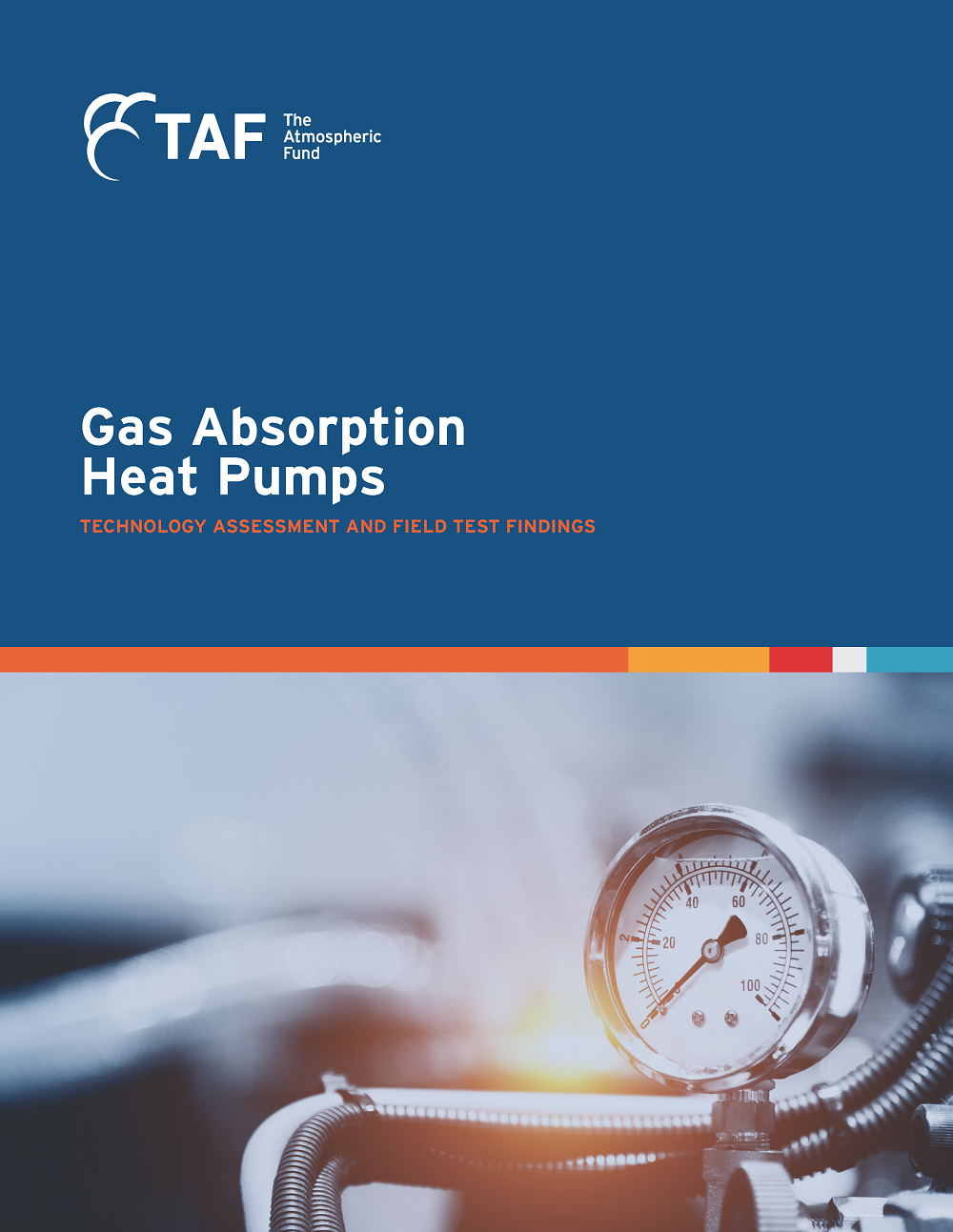October 2018. City of Toronto. Gas Absorption Heat Pumps Reduce Emissions from Natural Gas by 20 – 50 per cent
With gas absorption heat pumps (GAHP) emerging as an important emissions reduction option for the large share of Ontario buildings that use natural gas for space and water heating, this case study tracks the cost savings and emission cuts TAF achieved by installing the technology in two multi-unit seniors’ residences in North York, as well as the logistical issues that arose during the project.
Use of the two GAHPs to supply hot water was part of a wider energy retrofit at Arleta Manor that reduced carbon emissions 30 per cent, significantly improved indoor air and environmental quality, and saved $135,000 on gas, electricity, and water, 21 per cent more than expected. Testing and documenting the heat pumps’ performance was an important project objective for TAF and its project partner, Toronto Community Housing; while the Greater Toronto and Hamilton Area (GTHA) moves toward rapid decarbonization, natural gas will still be a part of the energy supply mix for the foreseeable future, so maximizing emissions reductions will mean using that fuel as efficiently as possible.
With that in mind, the multi-residential GAHP demonstration project started out with four questions: whether gas absorption heat pumps are viable to supply domestic hot water in the GTHA climate, whether system performance matches up with manufacturers’ claims, how outdoor temperature affects that performance, and whether the technology is suitable for future cold-climate projects. TAF found that system efficiency varied along a continuum of outdoor temperatures from -5.9 to +15.9°C between November 1, 2017 and May 31, 2018. But overall, the results were consistent with manufacturers’ performance curves, and the heat pumps delivered significant gas savings, with a gas utilization efficiency (GUE) of 1.16 and a coefficient of performance (COP), factoring in electricity as well as gas consumption, of 1.14.
Until now, GAHPs have been used primarily in commercial buildings. But TAF wanted to test them at Arleta Manor because they’re starting to show up in single-family homes in Europe, and residential-scale units show promise in geographies with low natural gas prices, high electricity rates, and high demand for space and hot water heating—like Ontario and the northeastern United States. They’re more efficient than conventional condensing boilers, and can reduce operating costs in places where gas is cheaper than electricity for heating.
The experience at Arleta Manor showed that GAHPs can cut carbon emissions by 20 to 50 per cent by using less gas to do the same amount of work as a conventional gas boiler. The added efficiency means fewer combustion emissions on the site and lower methane emissions from natural gas extraction and transport. It’s particularly important to reduce emissions of methane, a short-acting greenhouse gas that is many times more potent than carbon dioxide while it remains in the atmosphere.
Another important climate benefit is that GAHPs use ammonia as a refrigerant, rather than the hydrofluorocarbons (HFCs) currently employed in electric heat pumps. While ammonia has no impact on global warming, HFCs are such a damaging greenhouse gas that their elimination leads Project Drawdown’s list of the 100 strategies for reducing atmospheric carbon. Ammonia is a human health hazard when people encounter it, but GAHPs use a sealed-loop system that creates only minimal risk of exposure.

